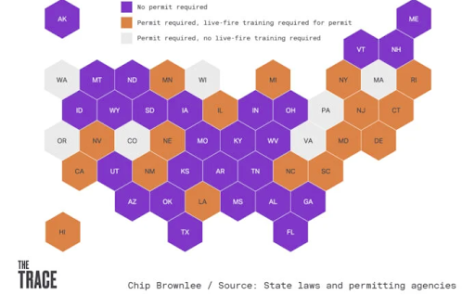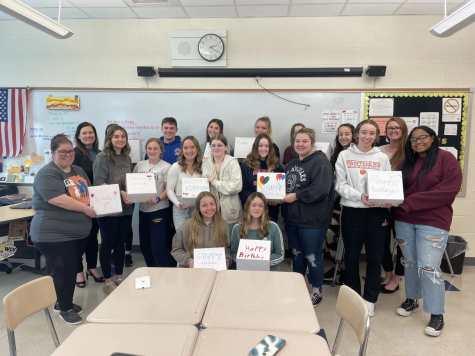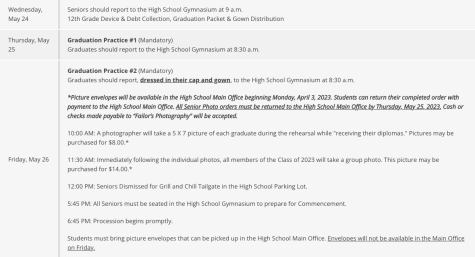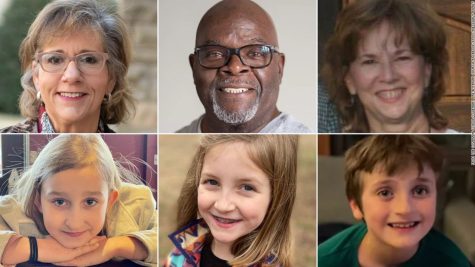How holidays are spent around the world
December 19, 2019
Two billion people around the world celebrate Christmas each year. However, there are many other holidays celebrated around the world that are celebrated as well.
Hanukkah:
Hanukkah is an eight-day Jewish celebration that commemorates the rededication of the Second Temple in Jerusalem. The holiday begins on the 25 of Kislev on the Hebrew calendar, which typically falls in November or December. It lasts for eight nights.
Each night, one candle on the menorah, also called the hanukkiah, is lit. While they light the candle, blessings are recited. The menorah is then displayed in one of the front windows to remember the events that started the holiday.
Members of the Jewish faith also celebrate with traditional foods, such as latkes, fried potato pancakes or sufganiyot, jam-filled donuts. They also play games with four-sided spinning tops known as dreidels and exchange gifts each night.
This year, Hanukkah will be celebrated from Dec. 22nd to Dec. 30th.
Kwanzaa:
Kwanzaa is a pan-African holiday that was created by Dr. Maulana Karenga in 1966. This holiday revolves around the ideas of family, community, and culture. The idea of Kwanzaa is based on the first harvest celebrations in Africa. These celebrations are called matunda ya kwanzaa in Swahili, which means first fruits when translated.
Kwanzaa is based on the five fundamental values of Continental African first fruits celebrations: ingathering, reverence, commemoration, recommitment and celebration. Ingathering gives people time to strengthen their bonds. There is time for reverence of the creator and creation. There is a commemoration for the past and the lessons learned from it.
The people recommit to cultural ideals. Finally, there is a celebration for the good of life, existence, community, culture and much more.
The celebrations include large feasts, singing and dancing that follow the symbols and traditions of the holiday. The Kinara, a seven candle holder, is also lit during these festivities.
Kwanzaa was created for two reasons. The first was to reaffirm and restore rootedness in African American culture during the Black Liberation Movement of the 1960s. The second was to reinforce the community and bonds between people.
Kwanzaa will be celebrated from Dec. 26 to Jan. 1.
Bodhi Day:
Bodhi Day is the Buddhist holiday that celebrates the day that Siddhartha Gautama experienced enlightenment. This day has been the basis of Buddhism for the past 2,500 years.
Gautama was a prince who abandoned his lifestyle and decided to sit underneath the Bodhi tree, hoping to one day reach true enlightenment. To reach this goal, he had to face his demons. Through intense meditation, he eventually reached this goal. This led him to create the Four Noble Truths and Eight-Fold Path.
Bodhi Day can be celebrated in many different ways. Some Buddhist homes have a Bodhi tree, and they decorate it. This tradition is similar to the Christmas tradition of decorating a pine tree. They decorate the Bodhi tree with beads, multicolored lights and reflective ornaments. Additionally, some Buddhists will make cookies in the shape of Bodhi trees or their leaves, or they go visit shrines.
Bodhi Day was celebrated Dec. 8 this year.
Pancha Ganapati:
Pancha Ganapati is a Hindu holiday that worships Lord Ganesha, the Lord of culture and new beginnings. The five-day festival allows those celebrating to work to better the five realms of their life: family, friends, associates, culture and religion.
The festival includes many different activities. Some of these include outings, picnics and feasts. Gifts and cards are exchanged with relatives. There is also a shrine in the living room of houses that the children dress each day to match the color of the day that represents one of Lord Ganesha’s rays of energy.
The days typically start with a tray of sweets, fruits and incense prepared and offered to Lord Ganapati. They also have chants and songs that are sung to honor him. After worship, sweets are enjoyed by everyone. Then, presents are given to the children and adults to be placed in front of their shrine and opened on the fifth day.
Each day is celebrated a little bit differently. The shrine is decorated with a different color and has a different objective for those participating.
On the first day, Lord Ganesha is dressed in the color yellow. Within the family, time is spent resolving physical, mental and emotional conflicts. The day ends with complimenting one another.
The second day the shrine is dressed in blue. The day is spent offering apologies and amending past issues with friends and relatives.
Day three honors employers, employees and coworkers with gifts and acts of kindness. Lord Ganesha is dressed in red.
On the fourth day, family, relatives and friends gather to share their artistic gifts in worshipping Lord Ganesha, who is decorated in green.
The final day is when the gifts are opened and people are inspired to start fresh. Lord Ganesha ends the holiday dressed in orange.
Pancha Ganapati will be celebrated from Dec. 21 to Dec. 25 this year.






![“She [Walker] was the biggest advocate for any student,” said Basile.](https://mundismillmedia.com/wp-content/uploads/2023/05/Colorful-Watercolor-Note-Paper-with-Brush-Stroke-A4-Document-336x475.png)



